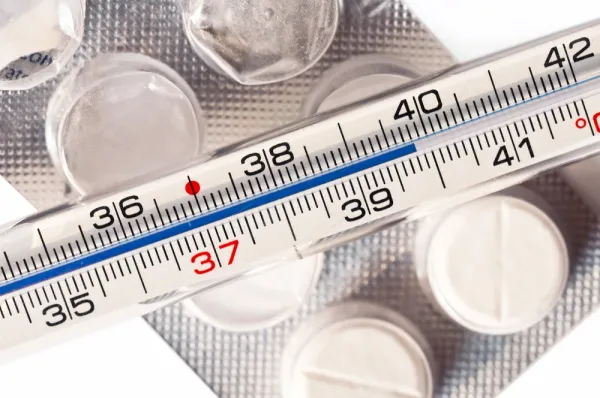Clear the 'Multiplex' Hurdle for Correct Code Selection
Make sure you know latest CCI instruction. If you’re still talking about “cocktails” in your lab, you need to get your lingo and your coding up-to-date. Although the “multiplex” terminology has been around for a few CPT® seasons, some folks are still confused about when and how to use the relevant codes. Now the latest update to the National Correct Coding Initiative (CCI) Policy Manual adds some instructions to make sure you get it right. What Is — and Isn’t — a Multiplex Test? Labs perform many types of tests that involve an immunological target, marker, or probe. These include procedures such as immunohistochemistry (IHC), fluorescence in situ hybridization (FISH), or a nucleic acid probe test to detect an infectious agent antigen. Multiplex: If a single one of these tests involves multiple distinct targets and provides multiple distinct results for each target, it is a multiplex test. If a single test involves multiple targets but provides a single result, it is not a multiplex test. The codes: Here are some multiplex test codes your lab might use for FISH and IHC: A true multiplex FISH or IHC test means that the lab analyst can evaluate distinct results for each probe, such as a distinct color signal from each ISH probe, or a different stain color for each distinct antibody. For infections agent testing, look to these multiplex codes: These multiplex tests allow the lab analyst to identify a distinct signal from each distinct probe that corresponds to each organism for which the lab is testing. Confusing terminology: Lab folks may call a test that involves multiple markers a “cocktail.” Although the term should correctly refer to a test that uses multiple markers but provides a single result, it’s an older term and not everyone is careful to use it that way. “To make sure you code correctly, it’s best to align your descriptions with CPT® terminology, and that means focusing on ‘multiplex,’ not ‘cocktail,’” says William Dettwyler, MT AMT, president of Codus Medicus, a laboratory coding consulting firm in Salem, Ore. Avoid Multiplex-Code Pitfalls Traps abound for misusing multiplex codes, and the snares are different for the various types of services. Let’s look at common snags and how to avoid them. IHC: When billing IHC stains that involve multiple antibodies, you can’t automatically assume that you should report the multiplex code 88342. For instance, pathologists may use a combination cytokeratin stain with CK5 and CK6, because CK5/6+ findings can be used as a marker for certain types of epithelial cell cancers. Do this: If the pathology report states findings of “CK5/6+,” you should code the stain as 88342 (Immunohistochemistry or immunocytochemistry, per specimen; initial single antibody stain procedure) even though the stain uses two antibodies. CCI says: The 2017 Policy Manual states, “An antibody stain containing multiple antibodies that yields a single reportable result is not a multiplex stain and should be reported with a single antibody staining procedure CPT® code.” Cost: Confusing codes 88342 and 88344 creates a $66.40 payment differential (88342 pays $108.38, while 88344 pays $174.78 based on 2017 Medicare Physician Fee Schedule [MPFS] national facility amount, conversion factor35.8887). That could be money you’ll have to return if you bill a CK5/6 qualitative test as a multiplex, or money you’ll lose if you fail to properly bill a true multiplex test like prostate PIN4. Infectious agent: The three code families for multiplex infectious agent nucleic acid probes “describe an anatomic region and the number of ‘targets’ tested,” according to the CCI Policy Manual. The anatomic regions are central nervous system (87483), gastrointestinal tract (87505-87507), and respiratory system (87631-87633). Trap: If the lab performs an amplified probe multiplex test on a cerebral spinal fluid (CSF) specimen for all the organisms listed in 87483, but also uses the same method to test for Coccidioides immitis and Toxoplasma gondii, you might be tempted to separately bill for those two organisms. Don’t, according to CCI: The 2017 Policy Manual states, “If one of these multiplex tests is performed and additional testing by these methodologies for additional microorganisms that might cause disease in the anatomic region described by the code descriptor is performed, only one multiplex testing code summing the testing for all ‘targets’ should be reported. The code descriptors identify some microorganisms, but not all, that might be tested by these methodologies for the respective anatomic regions.” ISH: Make sure you report just one unit of a multi-probe ISH test per specimen, even if the probes are separately reportable. For instance, the pathologist may perform a quantitative computer-assisted ISH test on multiple blocks from a breast specimen for human epidermal growth factor receptor 2 and centromeric probe for chromosome 17 (HER2/CEP17) to aid in patient evaluation for trastuzumab chemotherapy. In that case, report a single unit of 88374 for the service. Follow CCI: The 2017 Policy Manual states, “physicians should not report more than one unit of service for CPT® codes 88366, 88374, or 88377 per specimen for each multiplex probe staining procedure even if it contains multiple separately interpretable probes.”




